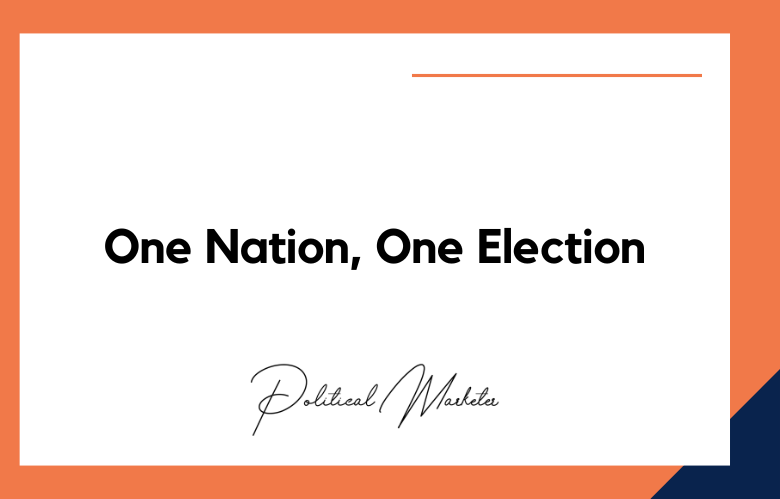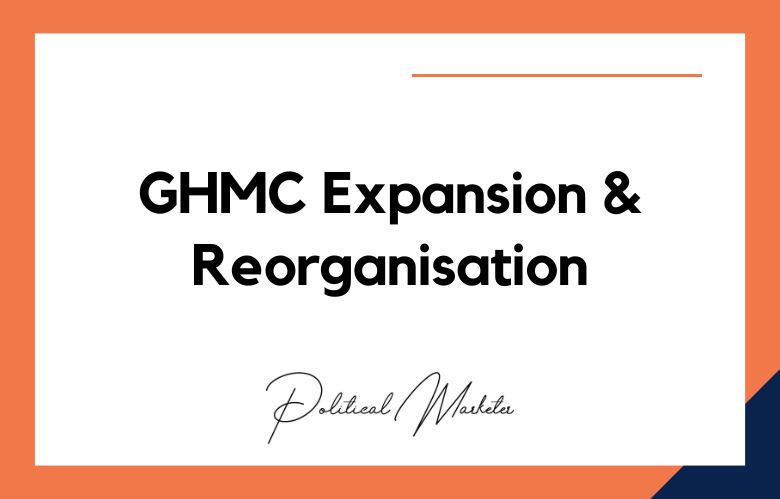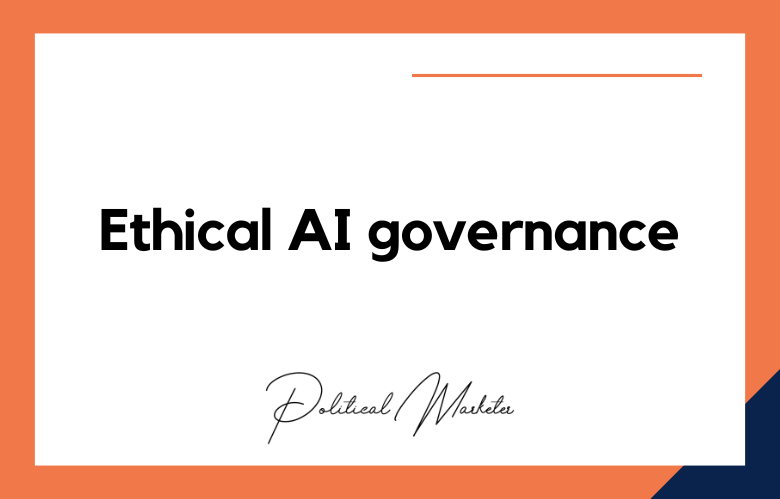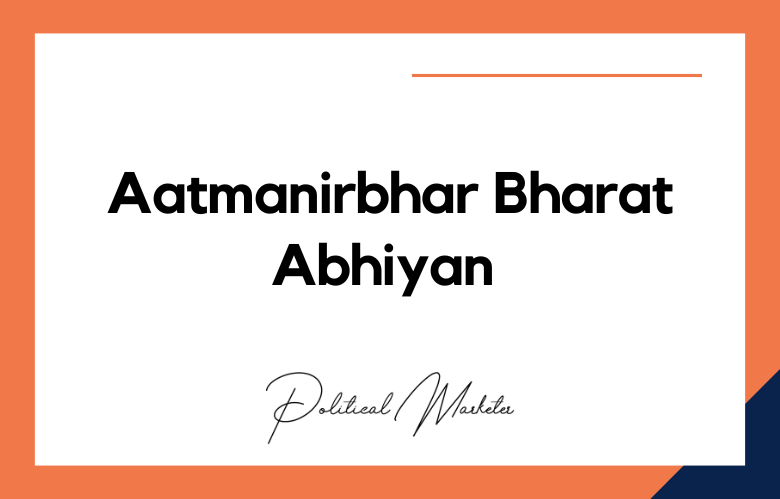India’s proposed One Nation, One Election (ONOE) initiative has become a topic of national debate. The aim is to synchronize elections for the Lok Sabha (India’s lower house of Parliament) and all state legislative assemblies, bringing about a unified electoral calendar.
This move is seen as a way to streamline the electoral process, reduce costs, and minimize the constant cycle of political campaigning.
However, the proposal raises concerns about its impact on India’s federal structure and regional political parties.
This detailed exploration will examine the history of simultaneous elections, the rationale behind One Nation, One Election, its challenges, and the strategies regional parties can adopt to remain competitive in this new political landscape.
These strategies could include aligning with national parties, focusing on unique regional issues, or enhancing their digital campaigning capabilities.
The Concept of One Nation, One Election
One Nation, One Election (ONOE) proposes holding elections for all levels of government—national, state, and local—on the same day or within a specific, synchronized timeframe.
Currently, elections in India are staggered, with different states and regions holding their polls at various times throughout the year. This results in a near-constant election cycle, consuming resources and attention from governance.
The idea behind One Nation, One Election is to revert to the system that was in place in India from 1951 to 1967 when national and state elections were held together.
After 1967, the cycle was disrupted due to the premature dissolution of certain state assemblies, and since then, elections have been held at different times.
Key Features of One Nation, One Election
Simultaneous Elections
One Nation, One Election proposes holding all elections—Lok Sabha, state legislative assemblies, and local bodies—at the same time. This would require restructuring India’s current election system, which is based on a staggered cycle.
Constitutional Amendments
To implement One Nation, One Election, multiple amendments to the Indian Constitution would be required, including to Articles 83, 85, 172, and 174.
These articles define the tenure of both the Parliament and state assemblies. Any changes to these articles would require ratification by at least half of India’s states, adding a layer of political complexity.
Historical Context: The Origins of Simultaneous Elections
Simultaneous elections were the norm in India until 1967. During this time, the Lok Sabha and the state assemblies followed a five-year cycle.
However, the cycle was disrupted due to political instability in several states, leading to the premature dissolution of their assemblies. From then on, elections were held at different times across the country.
The Proposal to Return to Simultaneous Elections
Since taking office in 2014, Prime Minister Narendra Modi has been a vocal proponent of One Nation, One Election.
He argues that having fewer elections would allow the government to focus on governance instead of continuous campaigning.
He also points out the cost-saving benefits, as conducting simultaneous elections would reduce the administrative and security expenses associated with multiple polls.
This could lead to a more efficient and focused governance, instilling a sense of optimism among the audience.
Rationale Behind One Nation, One Election
The government believes that One Nation, One Election can address several challenges in India’s electoral system.
Here are some key reasons behind the push for One Nation, One Election:
Cost Efficiency
Holding simultaneous elections could reduce the overall expenses of conducting multiple polls yearly.
Security, election staff, and logistics costs would be consolidated into a single electoral exercise. This could reassure the audience about the financial benefits of the proposal.
Focus on Governance
One of the primary criticisms of India’s current staggered election schedule is that it forces governments into constant campaign mode.
By reducing the number of elections, One Nation, One Election would allow both central and state governments to focus on governance and long-term policymaking without the distraction of frequent elections.
Increased Voter Participation
Frequent elections can lead to voter fatigue, where citizens become tired of being repeatedly called to vote.
One Nation, One Election proponents believe that consolidating elections into one day might actually increase voter turnout, as people will find it more convenient to vote once every five years for all levels of government.
This could potentially strengthen the democratic process, giving the audience a sense of hope for the future of Indian democracy.
Key Challenges in Implementing One Nation, One Election
While One Nation, One Election presents many potential advantages, it also faces significant challenges.
These challenges are legal, logistical, and political, and overcoming them would require substantial political consensus and coordination.
Constitutional and Legal Hurdles
Implementing One Nation, One Election would necessitate significant changes to India’s Constitution.
Specifically, amendments would be required to Articles 83, 85, 172, and 174—which govern the tenure of the Lok Sabha and state legislative assemblies.
These amendments would need the approval of at least half of India’s states.
The S.R. Bommai case, a landmark judgment on India’s federal structure, highlighted the autonomy of state governments.
Legal experts argue that One Nation, One Election could undermine this federal structure by reducing state governments’ independence to govern and dissolve assemblies as they need.
Logistical Complexities
India’s elections are already a massive logistical undertaking, involving over a billion voters across the country’s diverse geography.
Holding simultaneous elections would require an even greater number of Electronic Voting Machines (EVMs), Voter-Verified Paper Audit Trails (VVPATs), and election personnel.
The Election Commission of India would find managing such a large-scale exercise challenging.
Federalism Concerns
One of the most significant criticisms of One Nation, One Election is that it could weaken India’s federal structure.
The country’s states have unique political, cultural, and economic needs, and staggered elections allow them to prioritize these local concerns.
Critics argue that by holding simultaneous elections, national issues will overshadow local ones, eroding regional autonomy.
Disruption of Governance
If a state government collapses mid-term, it could disrupt the synchronized election cycle, leading to a situation where re-election becomes necessary before the completion of the five-year term.
This could create logistical difficulties in maintaining a consistent election calendar nationwide.
Political Opposition
Many regional parties oppose One Nation, One Election, fearing that it will benefit larger national parties like the BJP.
In simultaneous elections, national issues dominate, potentially marginalizing regional parties focusing on local concerns.
Potential for Single-Party Dominance
Studies have shown that when elections are held simultaneously, the same party is more likely to win both the national and state elections.
This could undermine the distinction between local and national issues and lead to the dominance of a single political party across multiple levels of government.
This potential for single-party dominance could pose a significant challenge for regional parties, as they may struggle to compete with larger national parties.
The Impact of One Nation, One Election on Regional Political Parties
One of the most significant impacts of One Nation, One Election will be on regional political parties. These parties often rely on local issues to mobilize voters and gain electoral success.
However, the One Nation, One Election proposal could pose several challenges for regional parties:
Marginalization of Local Issues
Simultaneous elections could shift the focus of political campaigns towards national issues, sidelining the specific local concerns that regional parties often champion.
This could make it harder for regional parties to gain traction in a nationalized election narrative.
Increased Competition with National Parties
Regional parties could find it difficult to compete against the financial and organizational strength of national parties like the BJP and Congress.
In a synchronized election, national parties could use their broader appeal and resources to dominate national and state-level elections.
Potential Erosion of Federalism
One Nation, One Election can weaken India’s federal structure by centralizing political power. Critics argue that regional parties could be sidelined as national narratives take precedence, reducing the autonomy of state governments.
Strategies for Regional Parties to Compete in an One Nation, One Election Scenario
Despite the challenges posed by One Nation, One Election, regional parties can adopt several strategies to remain competitive:
Emphasize Local Issues and Identity
Regional parties should double down on championing state-specific issues.
By focusing on local concerns—such as regional development, cultural preservation, and community welfare—regional parties can distinguish themselves from national parties that may focus on broader, national-level issues.
Strengthen Grassroots Networks
Building strong grassroots networks is essential for regional parties to maintain visibility and connect with voters.
By engaging directly with local communities through town halls, community meetings, and outreach programs, regional parties can reinforce their commitment to regional interests.
Form Strategic Alliances
Regional parties should consider forming alliances with like-minded national or other regional parties.
These alliances can help regional parties pool resources, share campaign infrastructure, and avoid splitting votes into key constituencies.
Leverage Social Media and Technology
Digital platforms offer regional parties the opportunity to reach younger, tech-savvy voters who may not be as easily accessible through traditional campaigning methods.
Social media platforms like Twitter, Instagram, and Facebook allow regional parties to engage with voters, share their messages, and build a stronger online presence.
Optimize Financial Resources
Regional parties can optimize their financial resources by focusing on targeted, high-impact constituencies.
To build financial independence, they should explore innovative fundraising methods such as crowdfunding and small-donor campaigns.
Advocate for Federalism and Local Autonomy
Regional parties can emphasize the importance of federalism and the need to maintain state governments’ autonomy.
By framing their campaigns around defending local interests, regional parties can position themselves as protectors of state rights and regional identity.
Develop Coalition Government Strategies
If ONOE leads to the dominance of national parties at both the state and national levels, regional parties can focus on becoming kingmakers in coalition governments.
Regional parties can ensure they still have a voice in governance by negotiating for key portfolios and influence within coalition arrangements.
How Social Media Can Help Regional Parties Reach a Broader Audience
Social media platforms offer regional parties an invaluable tool for reaching voters who may not be accessible through traditional media.
Here are some ways regional parties can use social media effectively:
Targeted Advertising
By using platforms like Facebook and Instagram’s targeting features, regional parties can tailor their messages to specific voter demographics, such as youth, women, or marginalized communities.
Engaging with Younger Voters
Younger voters are more likely to engage with political parties through social media.
Regional parties can use platforms like Twitter to interact directly with voters, answer questions, and build a more personal connection.
Sharing Achievements
Regional parties can use social media to showcase their governance successes, such as development projects, social programs, or other initiatives directly benefiting the local population.
Financial Strategies for Regional Parties Under One Nation, One Election
Campaign finance is a critical factor in the success of any political party. Here are some financial strategies regional parties can adopt:
Crowdfunding Initiatives
Regional parties can raise funds from small donors by engaging supporters through crowdfunding platforms.
This not only provides financial support but also fosters a sense of community involvement.
Optimizing Campaign Spending
Regional parties should maximize the impact of their financial resources by prioritizing high-stakes constituencies and investing in digital outreach to reach a broader audience.
How Regional Parties Can Highlight Local Issues to Gain Support
State-Specific Problems
Regional parties can gain support by focusing on state-specific problems such as infrastructure development, education, healthcare, or agriculture.
Highlighting how their policies directly address these concerns can help build trust with voters.
Cultural Identity
In states with strong cultural identities, regional parties can emphasize preserving local traditions, languages, and customs. This can resonate with voters who feel pride in their regional heritage.
One Nation, One Election: Legal Hurdles and Democratic Challenges
The proposal for simultaneous elections to the Lok Sabha and State Assemblies, popularly known as One Nation, One Election, has reignited a long-standing constitutional and political debate. While the idea aims to bring efficiency and cost reduction to the electoral process, it raises complex legal questions and poses significant democratic concerns.
Constitutional and Legal Hurdles
Amendments Required:
To implement simultaneous elections, multiple constitutional provisions would need to be amended. These include Articles 83 (duration of Lok Sabha), 172 (duration of State Legislatures), and 356 (President’s Rule). The process demands two-thirds majority in both Houses of Parliament and ratification by at least half the states.
Federal Structure at Risk:
The Indian Constitution adopts a quasi-federal structure, where states enjoy a significant degree of autonomy. Mandating a uniform electoral calendar could be interpreted as central overreach, undermining state-specific political timelines and democratic mandates.
Judicial Precedents:
The Supreme Court has emphasized the importance of periodic elections as a core feature of democracy. Any attempt to artificially extend or curtail legislative terms to synchronize elections could face constitutional scrutiny and judicial intervention.
Democratic and Operational Concerns
Voter Fatigue vs. Voter Awareness:
Proponents argue that frequent elections lead to fatigue and disengagement, while synchronized elections may enhance participation. However, critics contend that staggered elections maintain continuous democratic engagement and local accountability.
National Issues vs. Regional Priorities:
Simultaneous elections risk overshadowing regional concerns with national narratives. This could distort the electorate’s decision-making, especially in states with distinct political and developmental contexts.
Disruption of Democratic Rhythm:
Frequent elections offer regular checks on governments. Aligning elections may reduce these intervals of democratic assessment, potentially weakening citizen oversight and responsive governance.
Implementation and Administrative Readiness:
Holding nationwide elections in one phase or a tight schedule demands extensive logistical capacity. From EVM availability to security forces deployment, the scale of coordination required could strain institutional resources.
Political and Strategic Implications
Advantage to National Parties:
Larger national parties with greater financial and organizational reach may benefit disproportionately from synchronized campaigns, potentially marginalizing smaller regional players and altering the federal balance.
Policy Paralysis and Model Code of Conduct:
Frequent imposition of the Model Code of Conduct during staggered elections is cited as a governance bottleneck. A unified election cycle could reduce this administrative disruption but at the cost of limiting democratic expression in the interim.
Breakdown Scenarios:
In the event of a premature dissolution of either the Lok Sabha or a State Assembly, synchrony would be broken. Mechanisms to restore it, such as temporary caretaker governments or fixed-term adjustments, would require extraordinary constitutional planning and legal safeguards.
Conclusion: Navigating the One Nation, One Election (ONOE) Landscape
One Nation, One Election presents opportunities and challenges for India’s political system.
While the proposal aims to reduce the cost of elections and increase voter turnout, it raises significant concerns about federalism, regional representation, and political competition.
For regional parties, adapting to this new landscape will require a multi-faceted strategy that focuses on local issues, strengthens grassroots networks, forms strategic alliances, leverages social media, and optimizes financial resources.
By emphasizing their role as champions of state-specific concerns, regional parties can continue to be essential in India’s diverse and dynamic democracy.
One Nation, One Election: Impact, Challenges, and Strategies for Regional Parties – FAQs
What Is One Nation, One Election?
A proposal to conduct national, state, and local elections simultaneously within a unified timeframe.
When Did India Originally Practice Simultaneous Elections?
From 1951 to 1967, India conducted synchronized elections for both the Lok Sabha and state assemblies.
Why Did Synchronized Elections Stop After 1967?
Premature dissolutions of state assemblies disrupted the uniform electoral cycle, leading to staggered polls.
What Constitutional Changes Are Needed For One Nation, One Election (ONOE)?
Amendments are required to Articles 83, 85, 172, and 174 related to the duration and dissolution of legislative bodies.
What Majority Is Required To Amend These Articles?
A two-thirds majority in both Houses of Parliament, plus ratification by at least half of the states.
How Might One Nation, One Election (ONOE) Affect Federalism In India?
It could weaken state autonomy by imposing a centralized electoral calendar on diverse political units.
What Logistical Challenges Does One Nation, One Election (ONOE) Present?
It demands a massive increase in the availability of EVMs, trained personnel, and security forces for simultaneous elections.
How Would Simultaneous Polls Impact Election Costs?
One Nation, One Election (ONOE) could reduce overall expenses by limiting repetitive deployment of administrative and security resources.
Can One Nation, One Election (ONOE) Improve Governance?
Yes, it may reduce constant campaigning and allow governments to focus on long-term policy implementation.
Could One Nation, One Election (ONOE) Increase Voter Turnout?
Possibly, by minimizing the number of voting days and reducing voter fatigue.
How Might National Issues Dominate In One Nation, One Election (ONOE)?
National themes may overshadow state-specific concerns, affecting voter perception in local elections.
What’s The Risk For Regional Parties Under One Nation, One Election (ONOE)?
Regional parties may lose visibility and influence as national parties dominate the political discourse.
Could One Nation, One Election (ONOE) Cause Single-Party Dominance?
Synchronized elections could increase the chances of a single party winning both national and state mandates.
How Would Mid-Term Dissolutions Impact One Nation, One Election (ONOE)?
A premature dissolution of a legislature would break the synchronization, complicating future election schedules.
What Legal Precedent Raises Doubts About One Nation, One Election (ONOE)?
Judicial rulings like the S.R. Bommai case stress state autonomy, which could conflict with a uniform electoral model.
What Political Tensions Might One Nation, One Election (ONOE) Fuel?
Opposition from regional parties concerned about being sidelined in a centrally controlled system.
Could One Nation, One Election (ONOE) Reduce Election-Related Governance Slowdown?
Yes, by limiting the frequency of the Model Code of Conduct, it could reduce disruptions in public administration.
What Strategies Can Regional Parties Use In One Nation, One Election (ONOE)?
They can emphasize local identity, strengthen grassroots campaigns, build coalitions, and expand digital outreach.
Are There Logistical Institutions Prepared For One Nation, One Election (ONOE)?
Existing systems like the Election Commission would require major upgrades and additional infrastructure.
Does One Nation, One Election (ONOE) Require Broad Consensus?
Yes, successful implementation needs political agreement, legal preparedness, and operational coordination at all levels.











